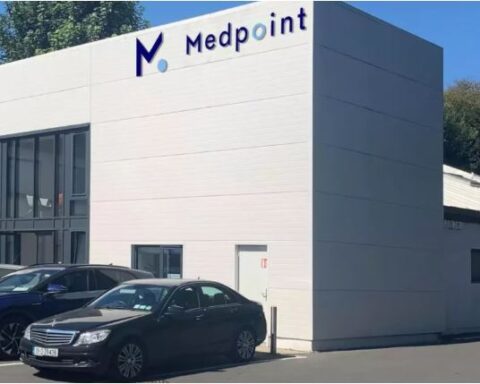Most engineers fail their CDR assessments not due to a lack of technical expertise, but rather due to their struggle to present their skills in the format required by Engineers Australia. From vague descriptions, plagiarism, and excessive jargon to failure to follow EA guidelines, engineers make common mistakes that cost them their dreams. Rejection can also occur due to myths such as “copying samples is acceptable” or “more technical detail is better,” as originality and clarity matter most.
In this blog, we have answered the top 5 questions engineers ask about CDR reports. Furthermore, we have added a checklist to help you improve your chances of EA approval.
What Is a CDR and Who Needs to Write One?
A Competency Demonstration Report (CDR) is required for engineers who wish to migrate to Australia. It is a set of documents that Engineers Australia uses to check the qualification of migrant engineers. CDR is more like a story of your engineering journey, unlike a normal résumé. CDR explains how you have contributed to the projects and also describes how you used your skills, solved problems, not just where you studied or worked.
Do I Understand the Purpose of the CDR?
The CDR is not just a formality; rather, its purpose is to prove that you have the right skills and experience to Engineers Australia for getting employment as an engineer in Australia.
The primary goal of the CDR in migration is to act as your ticket to a Skilled Migration Visa. The CDR helps Engineers Australia check if you meet their standards, even if your degree isn’t directly recognised in Australia. You cannot get approval to work as an engineer in Australia without a successful CDR.
Pro tip: Instead of risking your career, choose CDR Report writing services as the expert will guide you to write the perfect CDR.
Am I Clear That It’s about My Skills, Not Just My Company’s Projects?
Focusing solely on the achievements of big companies is one of the common mistakes many engineers make. Personal achievement, such as your role — including the problems you solved, the decisions you made, and how you applied engineering principles — is analyzed by Engineers Australia.
Do I Know Which ANZSCO Code Matches My Engineering Role?
It is crucial to choose the correct ANZSCO code, as it ensures your CDR matches the correct engineering category (e.g., civil, mechanical, electrical). This further increases your chances of approval.
What Are the Main Components of a CDR?
The CDR Report for Engineers Australia is composed of four fundamental sections and is prepared to demonstrate your engineering skills, knowledge, and professional experience. It is not just to follow a format.
- Curriculum Vitae (CV): A clear summation of your academic qualifications, work experience, and personal details in your CV. Engineers Australia uses it to assess your engineering background quickly and ensure your experience aligns with Australian standards.
- Continuing Professional Development (CPD): All of your courses, workshops, certifications, and training you’ve undertaken to improve your engineering skills are highlighted in the CPD section. The CPD section demonstrates your commitment to ongoing professional development. It is a key requirement for a successful CDR competency assessment.
- 3 Career Episodes (CEs): In the Career episode, there is a detailed narration of the engineering task you’ve handled, along with how many projects you’ve done previously. It focuses on personal contributions, problem-solving skills, and the practical application of engineering principles. Your competencies in real-world situations are highlighted here.
- Summary Statement: This section clearly links each Career Episode to Engineers Australia’s competency elements. Additionally, it demonstrates how your experience meets professional standards and fulfills all requirements for migration and skill assessment.
Your CDR report will highlight your expertise and enhance your chances of approval with Engineers Australia if it is prepared carefully.
What Are the Most Common Mistakes to Avoid?
| Common CDR Mistake | Do’s | Dont’s |
| Plagarism | ✔Employ your own words and experience. ✔ Sources must be referred to correctly. | ✖ Copying content from friends or a sample and a report. ✖ Only submit original content as plagiarism detectors are used. |
| Vague writing | ✔ First must be used while writing. ✔ A clear example and outcome must be provided. | ✖ Avoid using generic statements. |
| Too Much Technical Jargon | ✔ Technical terms must be explained clearly and simply. ✔ Focus only on problem-solving and results. | ✖ Overloading your CDR with complex jargon that assessors may not understand. |
| Not Taking Feedback | ✔ You must get feedback from your mentor or a senior before submission. ✔ You can also opt for CPD Report Writing Services to ensure your CPD is perfectly aligned with the ANZSCO code and CDR. | ✖ Submitting the CDR directly and not checking for plagiarism, grammar, and structure issues. |
How Long Does the CDR Assessment Process Take?
The processing time for a CDR skills assessment with Engineers Australia can vary. While it’s typically estimated to be around 8 to 12 weeks, this can be longer if they request additional information or if there’s a high volume of applications. It’s always a good idea to start the process well in advance of any visa application deadlines.
Can I Use an Academic Project or a Single Project for Multiple Career Episodes?
It is crucial to have the right Career Episodes (CEs) for a successful CDR report for Engineers Australia. Three distinct engineering projects or experiences that highlight your personal skills, problem-solving, and technical expertise must be showcased in these episodes, not just team contribution.
Career Episodes Cover 3 Distinct Projects or Roles?
Three separate engineering projects or roles must be present in your career episode. In each section, your personal contribution, problem-solving skills, and application of engineering principles must be detailed here. It proves your hands-on experience and competency.
Writing Career Episodes That Stand Out for Engineers Australia
- Define the role clearly with a first-person description.
- A variety of experiences, including design, management, innovation, and troubleshooting, should be included.
- Your projects are aligned with your ANZSCO code and recent impactful work.
CDR Career Episode Selection Criteria: Boost Approval Chances
- A genuine engineering task must be included here, along with technical, analytical, or leadership elements.
- Also, never miss an opportunity to demonstrate personal initiative, problem-solving skills, and the application of engineering principles.
- You must avoid repetition or minor roles and instead add unique episodes.
- Preferably from the last five years with supporting documentation.
Choosing relevant and impactful Career Episodes ensures that your CDR effectively highlights your skills and boosts your approval chances with Engineers Australia.
✅ Ready-to-Use CDR Checklist for Engineers
A Quick Engineer’s Checklist helps you ensure your CDR report for Engineers Australia is complete, accurate, and well-structured, increasing your chances of approval.
✔ CV Includes All Academic and Job Details in Reverse Order?
Your most recent education and work experience should be listed first in your Curriculum Vitae. This will help you succeed in the migration skill assessment, as Engineers Australia can quickly assess your current qualifications.
✔ CPD Highlights Courses, Seminars, and Software Training?
The Continuing Professional Development (CPD) section must incorporate ongoing learning, including workshops, certifications, and software training. Your commitment to improving your engineering skills and staying current with industry standards will be demonstrated here, and it is essential for professional competency assessment.
✔ Summary Statement Links Each CE to EA Competencies (PE1, PE2, PE3)?
The Summary Statement must link the Career Episode to Engineers Australia’s competency elements. This will show how your work aligns with professional standards and satisfies all assessment requirements.
This checklist will ensure that your CDR report is structured, original, and fully demonstrates your engineering expertise for migration approval.
CDR Report Success: Extra Tips for Faster Approval
Your unique contributions, problem-solving skills, and technical expertise must be effectively showcased in the CDR, and this requires more than just writing. Think of your CDR as your personal engineering story. The Engineers Australia actually wants to see what you personally did in each project, rather than copied or generic content.
Consistent practice can help to strengthen your CDR, and professional feedback can also be used. The primary reason is that CDR reviewers provide guidance on structure, competence, and adherence to EA guidelines, helping you avoid common mistakes such as plagiarism or vague writing.
Conclusion: From Questions to Approval
A strong CDR is more than just writing, as it showcases your unique contributions, problem-solving skills, and technical expertise. It’s your personal engineering story as Engineers Australia wants to see your individual role in projects, not copied or generic content.
You must select three distinct Career Episodes that showcase your personal role, problem-solving skills, and technical expertise, avoiding repetition or minor contributions, to create a successful CDR. Genuine engineering tasks aligned with your ANZSCO code, preferably from the last five years, must be selected. Also, include supporting documentation. Common mistakes, such as plagiarism, vague writing, and excessive jargon, must be avoided by using your own words, providing clear examples, and offering simple explanations.
Read More Gorod








